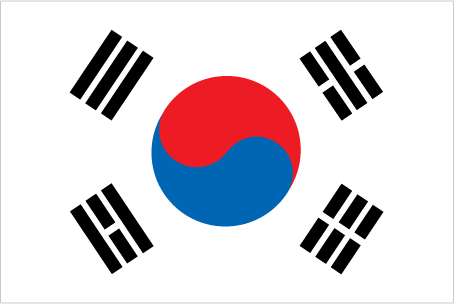Korea's vibrant cultural legacy, comprising music, art, literature, dance, architecture, clothing, and cuisine, offers a delightful combination of tradition and modernity. The traditional culture of Korea is the shared cultural and historical heritage of Korea and southern Manchuria before the division of Korea in 1945.

The spiritual ground and beliefs of Koreans are built mainly around the religions of Confucianism, Buddhism, and Christianity. Of these, Confucianism has had the greatest impact on Korean family life, work ethic, and social relationships. The once-dominant Confucian culture—with its emphasis on respect for ancestors, age, and seniority—continues to influence Korean family, work, and social life today.
Overview of Korea
Korea's vibrant cultural legacy, comprising music, art, literature, dance, architecture, clothing, and cuisine, offers a delightful combination of tradition and modernity. Korea is greatly influenced by the Chinese and Japanese cultures.
This influence can be seen in Confucianism, which established many traditions that are still evident in Korean society today. The spiritual ground and beliefs of Koreans are built mainly around the religions of Confucianism, Buddhism, and Christianity. Of these, Confucianism has had the most impact on Korean culture.
Korean cultural etiquette is very important in both making and eating food. For instance, the use of chopsticks is necessary for eating anything except soup. Since the mid-20th century, Korea has been split between the North Korean and South Korean states, resulting in a number of cultural differences that can be observed between the two regions.
Korean traditional dress is a reflection of their love for life and respect for values.
The Three Kingdoms of Korea
The Three Kingdoms of Korea were Goguryeo, Baekje, and Silla. Goguryeo was the first to be established as well as the largest and most powerful. With the destruction of the Han Chinese military commandery Lelang in 313 A.D.
and the division of the peninsula among the three kingdoms of Goguryeo (in Korean three kingdoms period explainedFor 10% off your first purchase go to narratively.com/kings and use promo code KINGSSSella), Baekje (in southwestern Korea), and Silla (in southeastern Korea), these kingdoms began their rise to power. Each kingdom had its own unique culture and government.
For example, Goguryeo was known for its military power while Baekje was known for its art and culture. Silla was a more peaceful kingdom but was also known for its scholarship. These three kingdoms competed with each other for control of the peninsula until 668 when Silla
The Joseon Dynasty
Korea has a long and vibrant cultural history, with music, art, literature, dance, and cuisine that offer a delightful combination of tradition and modernity. The Joseon Dynasty was founded by Yi Seong-gye after the fall of Goryeo, and saw remarkable growth through the development of science, technology, and handicrafts.
The Joseon period has left a substantial legacy to modern Korea; much of modern Korean culture, etiquette, norms, and societal attitudes toward current issues can be traced back to Joseon times.
During the Joseon Dynasty, ethics were based on virtues like filial piety. This emphasis on virtues helped to create a society that was stable and orderly. Dance was also an important part of Joseon culture; traditional dances date back to the Goryeo dynasty. These dances have undergone some modifications over time, but they continue to be enjoyed by Koreans today.
The Joseon Dynasty was one of the longest-
Japanese Colonial Rule
Between 1910 and 1945, Korea was ruled as a part of the Empire of Japan. Japanese influence on Korean culture began after the Japanese occupation and annexation of Korea in the 20th century. The colonial authorities used their own school system as a tool for assimilating Korea to Japan, placing primary emphasis on teaching the Japanese language. Japanese colonial ideology worked through three distinct and yet mutually reinforcing channels: knowledge production, economic policies, and popular culture.
Korea was a unique colony as it was one of the last to be colonized in the world. Japanese colonizers pushed a heavy-handed assimilation policy that sought to totally stamp out Korean culture and replace it with Japanese culture.
In 1894-95 Japan fought a war against China over the control of Korea and gained Taiwan, Japan's first colony. (Sino-Japanese War) Japan defeats China, long time suzerain of Korea opening door for colonization. Korean textbooks, literature, film and other forms of popular culture explore
Post-war and Modern Korean Culture
Korea has a rich and unique culture that has been shaped by its tumultuous history. From the Korean War to the present day, South Korea has undergone a remarkable transformation, emerging as a global economic powerhouse with a vibrant and modern culture.
While traditional Korean culture is still revered by many, contemporary Korean culture is very much influenced by Western culture, particularly American popular culture. This can be seen in the popularity of American brands like Samsung and LG, as well as in the popularity of K-pop and Korean dramas.

Comments
Post a Comment